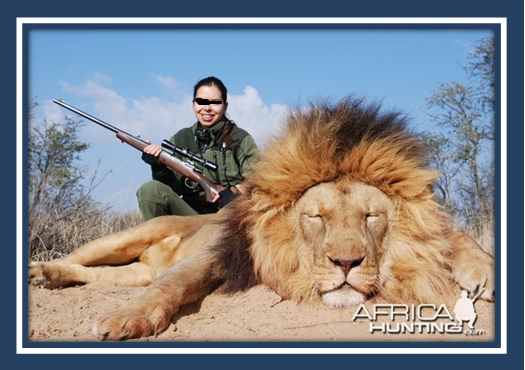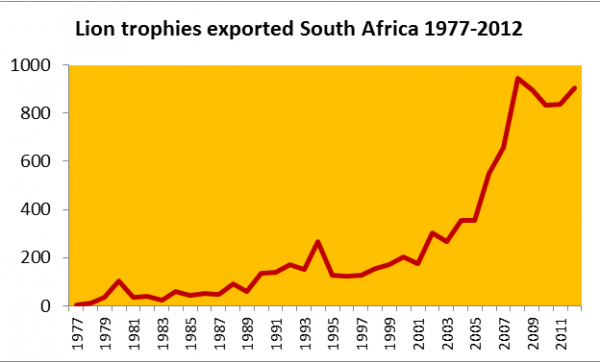News
Latest Lion Aid News
Lion trophy hunting - how do countries rate in terms of canned lion hunts?
Tuesday 16th December 2014
|
Captive raised lions – cheaper, easier, guaranteed In South Africa, 99% of the lions trophy hunted are raised in captivity and then released into a fenced field of various dimensions to be shot by intrepid trophy hunters. These lions have been meanwhile bottle fed when young by streams of paying “volunteers”, petted by hordes of people, and walked with when bigger for up to $200 per hour. Then kept in enclosures until “ready” to be hunted. Not surprisingly, these lions have become highly habituated to humans. Yet lion trophy“hunters” flock to South Africa to shoot these lions for several reasons: a) A “canned” lion is sold for much less than a wild lion – in South Africa a “canned” lion hunt can be bought for between $20,000 to $35,000 (female lions cost around $5,000) compared to $80,000 - $120,000 for a “wild” lion hunt in other countries; It is claimed by trophy hunting organizations that killing lions aids their conservation. This might seem strange, but these organizations claim that by maintaining vast hunting areas set aside for hunters (for example, 250,000 square kilometres in Tanzania alone), the various species benefit by having individuals killed. That concept is contentious, but not addressed here as it clearly does not apply to captive bred lions. All hunting organizations accept that shooting captive raised lions does nothing for the conservation of the species. Some claim that killing captive raised lions takes the “pressure” off wild populations, but that has been shown to be nonsense – very few of those hunting captive bred lions could afford a wild lion hunt, especially when not guaranteed a trophy. Using CITES Trade Database export and import records of only the lion “trophy” category (some hunting trophies are exported as “skins”), I looked at 15 countries whose citizens are primarily involved in lion trophy hunting in Africa over the five years 2008-2012 (where CITES export data end):
a) Canned hunting in South Africa is by far the most popular form of lion hunting in the world today, as an average of 76% of the hunters in the 15 countries most engaged in lion hunting shot canned lions between 2008 and 2102. When looking at the total number of lions shot by hunters in those 15 countries, 74% of those were raised in captivity. No wonder that South African breeders and operators earn more than $10 million annually from canned lion hunts.
In summary, it would appear that lion trophy hunters overwhelmingly shoot captive bred lions, and that this “preference” has led to the current situation where 6,000 to 8,000 lions are being bred in captivity in South Africa to meet the “demand”. It would also appear that despite this provision of captive bred lions to hunters for very many years, little effective action has been taken in South Africa to reduce the trade. It could therefore be concluded that the only means by which such trophy “hunters” will be dissuaded is by preventing imports into the EU and perhaps the USA, a measure likely to be mitigated by a shift in exports to other lion trophy importing countries like Russia and increasingly China. Unless concerted international action is taken to close down this sordid practice, captive bred lions will continue to be shot.
If you have not already signed up to our mailing list, you can add your name here and keep up to date with our ongoing work and, most importantly, DONATE to support our work to conserve the remaining fragile lion populations. Tags: canned hunting, South Africa Categories: Events/Fundraising |
Posted by Chris Macsween at 12:06
Lin Jenkins
17th December 2014 at 07:59
Its a damn disgrace that my country is allowing this and according to your annual table, it started peaking alarmingly since 'our' new government came into power - so they must be approached and forced to bring in laws to safeguard our beautiful animals.
Its scary to read all the carnage pertaining to not only our Lions, but the rest of the big 5 as well.
Thankyou for being their voice which they need so desperately
Add a new comment
Existing user
New user sign up





